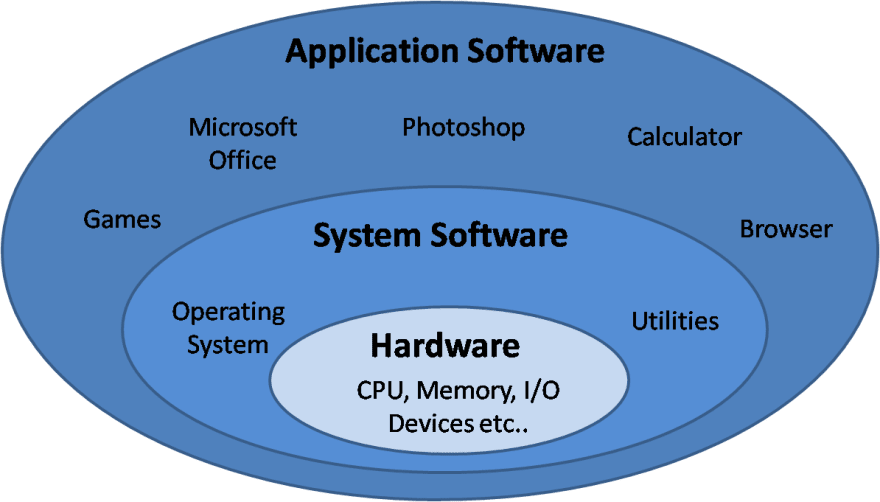This is the blog helping myself to review the knowledge that I have went over. Hope you all enjoy my summary.
The knowledge is based on C language.
Chapter 1: Computer Systems Structure
Before we dive into the deeper learning of computer system, the best way getting a comfortable start is to see the bigger picture of computer system structure. I think it is important for the beginner who just start learning Computer System or Operating System.
Just like a hamburger, which has different layers like piece of bread, vagetables, beef, cheese and so on, computer systems also are dive into different layers.
As we can see, computer systems could be divided into three big layers, which are: (Up to down)
1.Software Layers
All kinds of applications that we use daily
2.Operating System Layers
Operating System -- A special application between software and hardware, which is used to transfer user's or applications' "codes" or "instructions" and then letting the hardware understand how to manipulate the menory.
3.Hardware Layers
Including CPU, disks, registers, RAM and so on.
Specially, and generally we can divede them into five main components (based on every single component could be dived deeper to study at the following chapters)
Input/Output ports. (I/O ports)
Enable the computer to take information or interations from its environment and dispaly them back to the user in some meaningful way.Central processing unit. (CPU)
Runs or executes instructions and computers data and memory addresses.Random access memory (RAM)
Stores the data and instructions of running programs. The data and instructions in RAM are typically lost when teh computer system loses power.Secondary storage device (SSD)
Hard disks or solid state drives (SSD) that can store programs and data even when power is not actively being provided to the computer.Operating System (OS)
A software layer that lies between the hardware of the computer and the software that a user runs on the computer.
Next chapter, I will go over the , which is the basic knowledge in system, making you think like a computer. Hope you like it and subscribe it :)









Top comments (0)